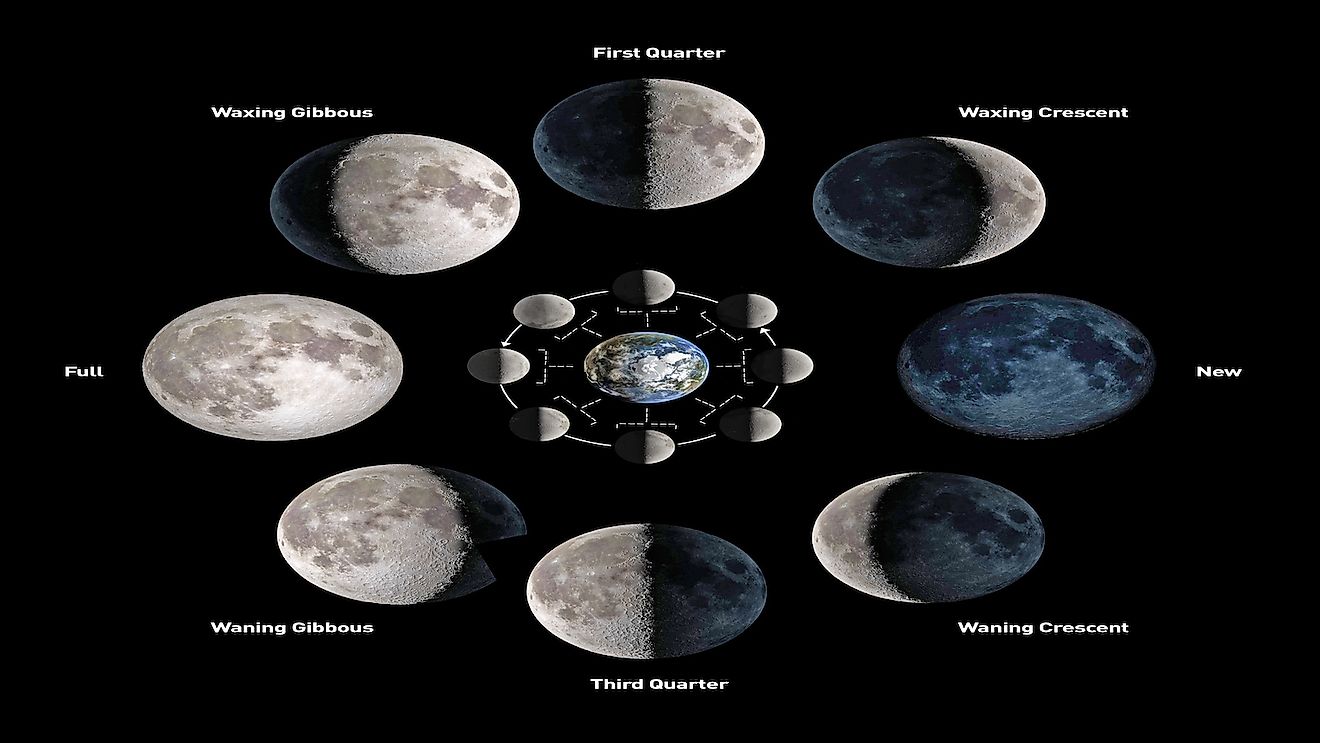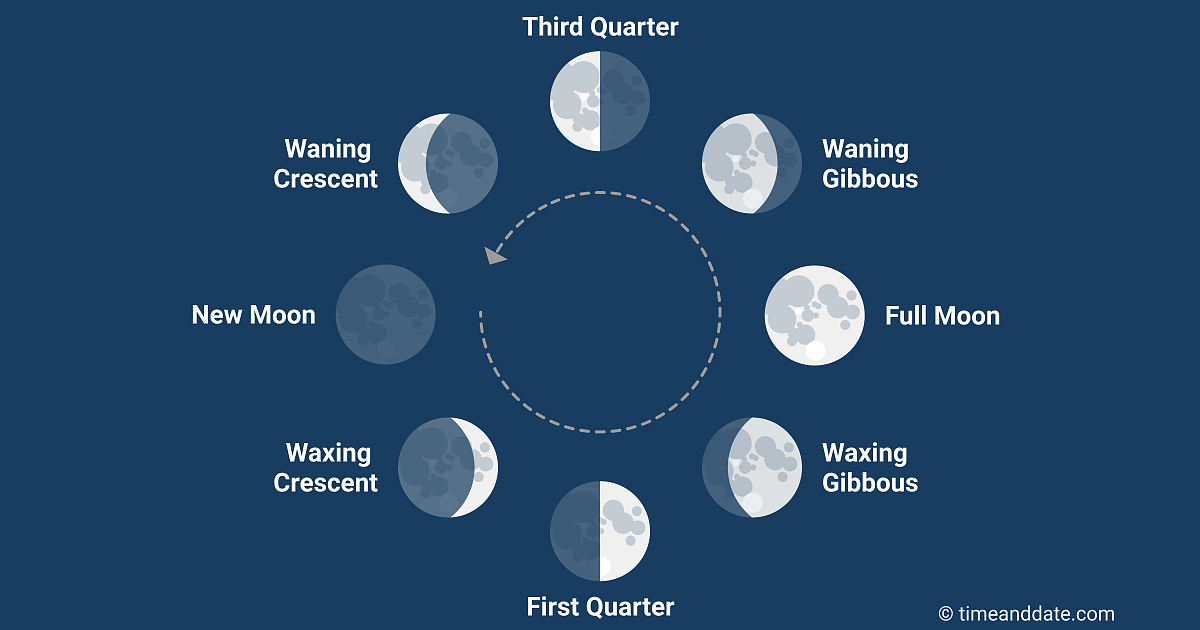Is It a Full Moon? Your Guide to Lunar Phases and Celestial Wonders!
Are you curious about the lunar cycle and its effects on our planet and daily lives? Look no further! The full moon is just one of the eight distinct phases that the Moon goes through during its monthly orbit around Earth. Understanding the lunar phases can be fascinating, and in this article, we'll explore the science behind the full moon and the other lunar phases.
From the new moon to the full moon, each phase offers a unique opportunity to observe and appreciate the celestial wonders of our universe. With the right tools and a little bit of knowledge, you can make the most of these events and unlock the secrets of the lunar cycle. Whether you're a seasoned astronomer or a curious beginner, this guide will provide you with a comprehensive overview of the lunar phases and help you navigate the world of celestial wonders.
Understanding the Lunar Cycle
The lunar cycle, also known as the synodic month, is the time it takes for the Moon to complete one orbit around Earth. This cycle is approximately 29.5 days long and is the basis for the lunar phases. The lunar cycle is influenced by the gravitational pull of the Sun and Earth on the Moon, causing the Moon's orbit to wobble and resulting in the eight distinct phases we see in the sky.
Lunar Phases and Their Characteristics
The lunar phases are determined by the amount of sunlight that reflects off the Moon's surface towards Earth. As the Moon orbits the Sun, different amounts of its illuminated surface are visible from our planet, resulting in the eight distinct phases. Here's a brief overview of each phase:
- New Moon: This is the first phase of the lunar cycle, when the Moon is positioned between Earth and the Sun. The side of the Moon facing Earth is not illuminated by the Sun, making it invisible from our planet.
- Waxing Crescent: As the Moon moves away from the Sun, more and more of its illuminated surface becomes visible from Earth. This phase is characterized by a growing crescent shape in the sky.
- First Quarter: When the Moon has completed one-quarter of its orbit around the Sun, it reaches the first quarter phase. The Moon is now half-illuminated, with the right half visible from Earth.
- Waxing Gibbous: As the Moon continues to move away from the Sun, more of its illuminated surface becomes visible, resulting in a larger and larger gibbous shape.
- Full Moon: The full moon is the final phase of the lunar cycle, when the entire illuminated surface of the Moon is visible from Earth.
- Waning Gibbous: After the full moon, the Moon begins to decrease in brightness as it moves away from the Sun. This phase is characterized by a decreasing gibbous shape.
- Last Quarter: When the Moon has completed three-quarters of its orbit around the Sun, it reaches the last quarter phase. The left half of the Moon is now illuminated, with the right half in shadow.
- Waning Crescent: The final phase of the lunar cycle is the waning crescent, where less and less of the Moon's illuminated surface is visible from Earth.
Celestial Wonders and the Lunar Cycle
The lunar cycle has a profound impact on our planet and daily lives. From the tides to the behavior of animals, the full moon can influence the natural world in remarkable ways. Here are some of the most fascinating ways in which the lunar cycle affects our world:
- Tides: The gravitational pull of the Moon on the oceans is responsible for the rise and fall of tides. The full moon and new moon phases are the most significant, with the highest high tides and lowest low tides occurring during these events.
- Animal Behavior: Many animals are influenced by the lunar cycle, with some species exhibiting changes in behavior, migration patterns, or breeding habits. For example, many marine animals migrate to shallower waters during the full moon to spawn or feed.
- Plant Growth: Some plants are also affected by the lunar cycle, with research suggesting that the full moon can influence plant growth, flowering, and even seed production.
- Human Behavior: The lunar cycle has also been linked to human behavior, with some studies suggesting that the full moon can influence mood, sleep patterns, and even crime rates.
How to Observe the Lunar Cycle
Observing the lunar cycle can be a fun and rewarding hobby, especially with the right tools and a little bit of knowledge. Here are some tips for observing the lunar cycle:
- Binoculars or Telescopes: Binoculars or telescopes can help you get a closer look at the Moon and its phases.
- Moon Maps: Moon maps can help you track the lunar cycle and identify the different phases.
- Appointments with the Moon: Plan ahead and schedule appointments with the Moon by using lunar calendars or apps that track the lunar cycle.
- Photography: Take photos of the Moon during different phases to capture the changing lunar landscape.
Lunar Phases and Astrology
The lunar cycle has long been a source of fascination for astrologers and spiritual practitioners. Each lunar phase is believed to hold spiritual significance, with the full moon often associated with heightened energy and the new moon with new beginnings. Here are some of the most common astrological interpretations of the lunar phases:
- New Moon: A new moon is often associated with new beginnings, fresh starts, and renewal. It's a time for setting intentions and planting seeds for future growth.
- Waxing Crescent: The waxing crescent phase is often associated with growth, expansion, and positive energy. It's a time for taking action and pursuing goals.
- Full Moon: The full moon is often associated with completion, fulfillment, and release. It's a time for letting go of what no longer
Chaun Woo Parents Nationality
Tony Hinchcliffe Relationship
Constance Meester
Article Recommendations
- Joan Van Ark
- Rebecca Pritchard 2024
- Gaz Coombes Wife
- Manuel Garcia Rulfo Wife
- Tate Mcrae
- King Von Autospy
- Who Is Brittany Forcengaged To
- Beyonc
- Tiktok Unblocked
- Massad Boulos



